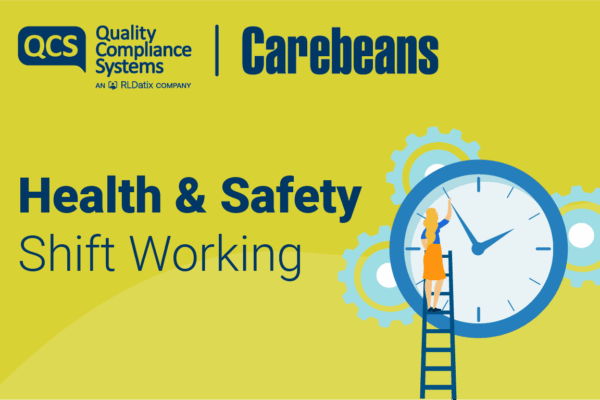Download our monthly H&S review for April on ‘Electric Vehicle Charging’ from our partner, Napthens H&S, here
DOWNLOAD NOW
Alternatively, read it here:
The world is turning on to electric. That doesn’t mean yours has to stop turning. Whether you’re planning building developments, running a fleet or you’re looking to transition your healthcare setting, hospital or nursing home car park. You will need to assess the risk and implement practical control measures to reduce the risks associated with onsite chargers.
Electricity at Work Regulation (1989)
The Electricity at Work Regulations apply to almost all places of work, including those of health care, social care, care home owners and operators, residential and nursing settings. Where Electric Vehicle chargers are installed.
“Electricity can kill or severely injure people and cause damage to property from the effects of fires and explosions. Every year accidents at work involving electric shock or burns are reported to the Health and Safety Executive (HSE)”.
Correct Selection and use of equipment
Under the provision and use of work equipment regulations 1999, Employers MUST ensure that work equipment (EV Chargers) are properly designed, constructed, installed and maintained so that it does not present a risk of electric shock, burns, fire or explosion when properly used.
“If you are considering installing EV Car Chargers within your health care setting, you should seek advice from your competent person, to ensure you adequately plan, manage and monitor your chargers before they are installed.”
What do you need to consider as a care home owner or operator or healthcare manager?
- Involvement of a competent H&S professional before your charger is installed
- Your duties under Construction and Design Management Regulations (2015)
- Fire Risks and Emergency Planning
- General Risk Considerations
Avoid the shock
Avoid the “SHOCK” by consulting your competent person and ensure you are meeting your legal compliance.
“7% of all reported workplace injuries were as a result of a slip, trip or fall, with 28% of all fatalities in the workplace being caused by a slip, trip or fall. On average approximately 50 people die each year from a slip, trip or fall”
(Statistics courtesy of HSE)
EVC Chargers in health care settings
Trip hazards can be greatly reduced by ensuring safe operating procedures are in place, checked and enforced.
The Health and Safety at Work Act 1974, places duties on employers to protect their employees and anyone affected by their business (e.g., visitors, service users, contractors). It is essential that risk is designed out of your EV chargers as early as possible. Since the launch of a new British Standard, you should also ensure that EV chargers are accessible for people with disabilities, such as sight impairment and mobility issues.
Fire Risk Assessment
Practical passive, active, and managerial control measures should be considered as part of the fire risk assessment for the premises when selecting and designing areas for use as electric charging points. *It may also be a requirement to inform your insurers that you have EVC’s on site.
General Consideration
- Charging bays should be signed and marked prominently on the ground to allow vehicles to park close to the charging point and prevent the stretching of charging cables. The length of charging cables should be sufficient to allow their use with the intended equipment without risk of damage
- Charging points should be protected against mechanical damage by vehicles. For example, they should be installed above ground level and be located on a raised island, or be protected by kerbs, bollards, or metal barriers
Service & Maintenance
Routine checks should be made to ensure any damage to the charger is identified, isolated, and reported at the earliest opportunity. Electrical safety devices such as RCDs should be functionally tested at regular intervals. This reduces the severity of any electric shock or short circuit and could save a life.
Ensure you have a schedule of preventative maintenance, inspection and testing in place.
Procedures
Simple and effective procedures should be put into place, ensuring that your staff can operate the equipment safely and can carry out pre-use safety checks on things like the cable and sockets.
Do NOT allow cables to trail across walkways, or areas that service users and employees are put at risk.
Ensure operating procedures are available at your chargers.
Ensure there is an emergency procedure for reporting and isolating your charger.
Napthens Health and Safety is a trading name of ATG Health and Safety Consultants Limited. ATG Health and Safety Consultants Limited is a limited company incorporated
in England and Wales with registered company number 5172986. It is a business providing Health and Safety consultancy which is not regulated by the SRA.
VAT Reg No. 842 0852 39






